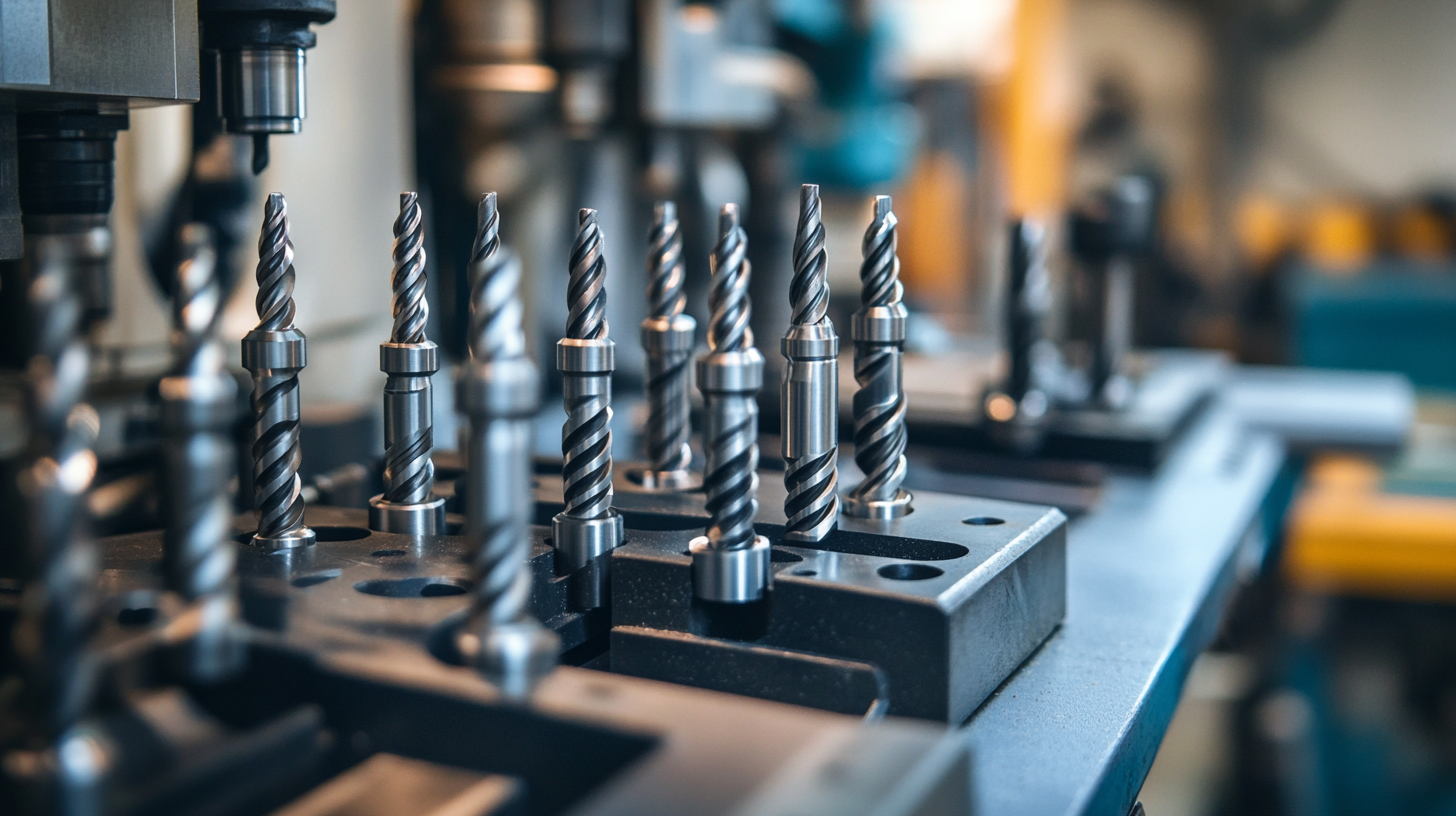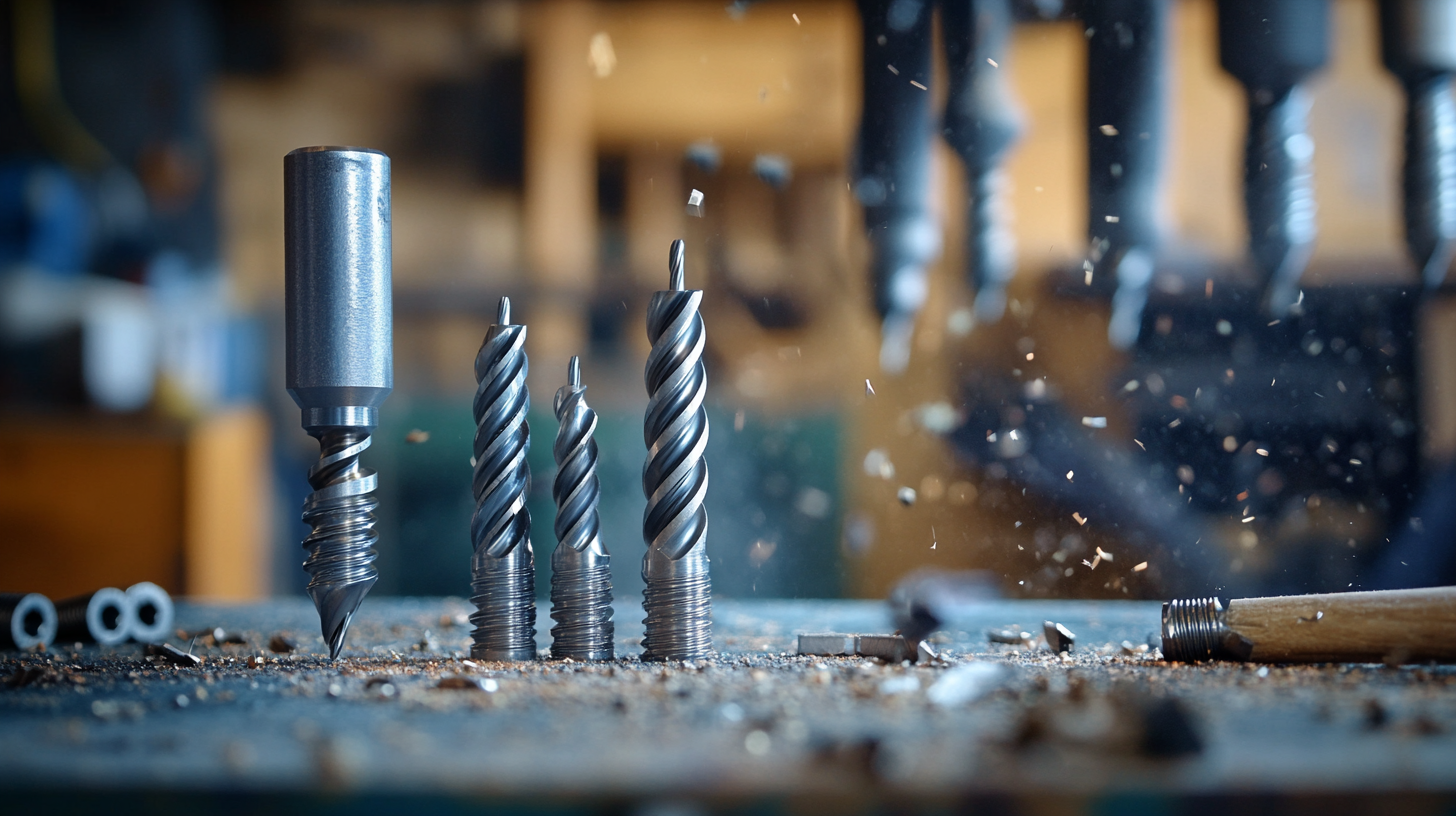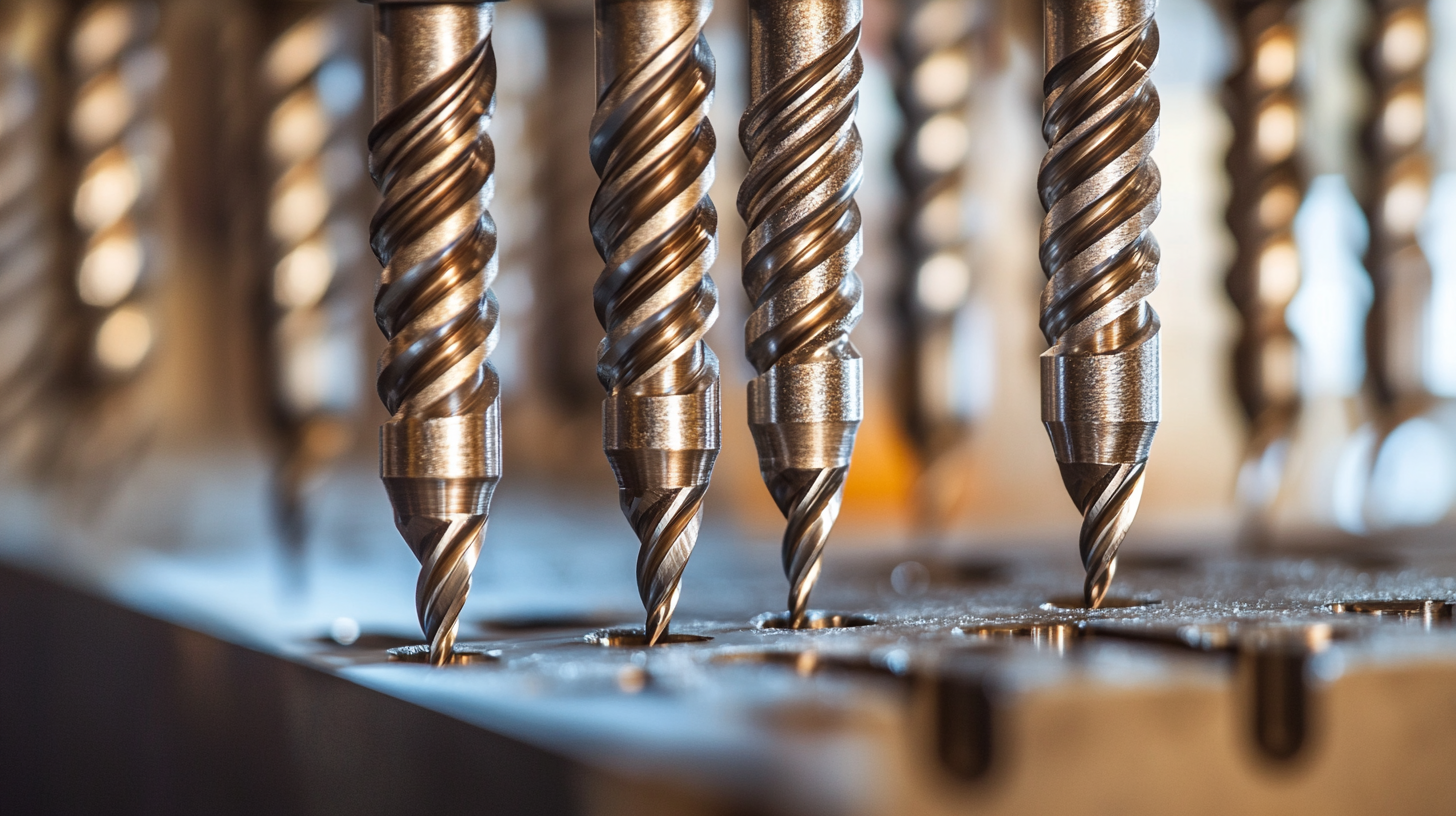Comprehensive Technical Specifications for Choosing the Right Drill Bit Set: A Step-by-Step Guide
Choosing the right tools is of paramount importance in the construction and DIY scene. The high-grade Drill Bit Sets are certainly among those required for success in precision and efficacy. From a report by MarketsandMarkets, it is claimed that the global power tools market is to grow from USD 30.2 billion in 2020 to USD 39.5 billion by 2025, which signals a rise in demand for specialized tools like drill bits. With the variety of materials and applications available, selecting the appropriate Drill Bit Set is crucial for professionals and hobbyists alike to ensure performance and safety.
Moreover, properly understanding drill bit specifications can greatly define project outputs. An apartment Drill Bit Set increases the work quality while enhancing productivity through decreased downtime and tool failures. The Tooling & Manufacturing Association also mentions that 20-30 percent operational efficiency is lost due to unequal selection of process tools. This user guide aims to provide an extensive overview of industry insights and technical specifications essential for making informed choices and ensuring that users select suitable drill bits tailored to their needs and materials.

Understanding Different Types of Drill Bits and Their Applications
Knowing about drill bit types and their applications is essential for making an informed choice regarding drill bit set selection. Drill bits have numerous designs made for specific materials and jobs. For example, among the most widely used, twist bits serve primarily for drilling into wood, metal, and plastic. Their uncomplicated designs allow versatility for use in many household to industrial operations. Conversely, masonry ones are ones meant for drilling in hard materials like brick and concrete, having hardened tips able to withstand extreme abrasive conditions. Drilling bit selection is more critical in specialized situations such as oil and gas. Advanced bits, such as roller cone and PDC (polycrystalline diamond compact) bits, are extensively used in exploratory drilling due to their ability to penetrate tough geological formations. The demand for these high-performance drill bits stems from increasing global energy needs, signifying constant technological evolution in the industry. Moreover, the advent of horizontal directional drilling tools depicts the transition in the drilling technology that promotes installing underground utilities with limited surface disturbances—a method that is especially becoming popular in urban infrastructure projects. These various kinds of drill bits are imperative not only because they allow an informed purchase but also because they allow for the right tool to be taken for the job, consequently improving efficiency and effectiveness on any drilling job.

Key Factors to Consider When Selecting a Drill Bit Set
To choose the proper drill bit set, several key factors must be considered, heavily influencing the outcome of your drilling endeavors. First off, the material used to manufacture the drill bits is truly significant. Usually, drill bit materials include high-speed steel (HSS), cobalt steel, and carbide. HSS drill bits are commonly used for almost every application. Cobalt drill bits are more resistant to wear and heat, meaning they are functional in drilling much tougher metals. As these drill bits are expensive, carbide bits present outstanding actual drilling performance and endurance, especially when addressing a more advanced drilling task.
Another important consideration is the size and range of drill bits in the set. Generally, a project will require the use of drill bits of varying sizes; therefore, a set of drill bits with a comprehensive range provides flexibility. Look for sets that include standard and metric sizes, with additional specialty bits for applications such as masonry or wood. Check if, in addition, the set contains step drill bits and countersink bits to increase the tools' versatility for different jobs.
Finally, the shank configuration stands as an important consideration in improving drill bit performance and compatibility. Hex shank drill bit sets are preferred, being usually much more secure in power drills. Also, consider how the drill bits are being stored and organized. A well-designed case not only protects the bits but also keeps them organized, making it easy for you to find the right size to use. By weighing these factors, you may therefore choose a drill bit set suited for you, enhancing all your drilling endeavors.

Detailed Comparison of Material Types for Drill Bits
In order to achieve the best performance in a wide range of applications, it is imperative to know which materials types are most relevant for different kinds of drill bit sets when choosing the perfect one for an application. The drill bit market is growing magnificently, particularly because there has been a growing demand for oil and gas exploration. According to forecasts in the market, research suggests that the global offshore drilling market is anticipated to have remarkable growth, which may be valued at 40.4 billion dollars in 2024 and estimated at 693.4 billion dollars by 2032. The growth points out the demand for advanced drilling technologies that would hold such vital parts such as premium drill bit materials to enhance efficiency and reliability.
Material types for drill bits play a significant role in their effectiveness. Traditional roller cone bits remain popular for their adaptability while more advanced types such as polycrystalline diamond compact (PDC) are gaining traction because of their unparalleled great hardness and abrasion resistance. The choice between materials influences the geological formations and the specific operational requirements. For example, hard rock formations require drill bits able to withstand very high pressure and temperature. Further indications of material consideration would include this aspect.
Aside from the traditional oil and gas applications, there are various significant emerging growth areas of drill bit applications in construction and manufacturing. The electric tool segment, which includes drill bits, is also expected to grow in the light of increasingly portable and efficient equipment demanded from industries. The compound annual growth rate for the electric tool market is above 6.4% from 2023 to 2032, indicating the continuous innovation geared towards various operational needs. Consequently, the nature of drill bit material types and their effects on performance will also be a major consideration beyond industry growth and technological advancement.

Essential Features and Accessories to Look for in a Drill Bit Set
A good knowledge of the important features and accessories can only make your drilling experience a little bit better. First things first: what material are the drill bits made of? High-speed steel (HSS) is an excellent choice for general purposes due to its durability and resistance to heat. In other more specialized applications drilling into metal or masonry, carbide-tipped or masonry bits will outperform the best HSS drills.
In addition to the bit material, another consideration is the range of sizes and types that the set contains. A truly versatile set should range in bit diameter and bit style; e.g., twist bits for wood, spade bits for larger holes, and concrete bits for harder surfaces. Sets with quick-change chucks or various shank types for use on different drill models offer convenience and versatility.
Anything else that can help you enhance your drill bit set? Think of external accessories such as a storage case classified by type, which can protect the bits from damage and enable quick access or a depth stop for a set of bits that provide consistency in drilling depth. A good drill set should come with a speed chart for recommended drilling speeds, and some even include drill bit sharpeners with which you can maintain an edge. Considering these factors, you will be able to make a sound decision based on your drilling requirements.
Maintenance Tips for Prolonging the Life of Your Drill Bits
Taking proper care of your drill bits can go a long way in increasing their life expectancy. First and foremost, you should clean them regularly. After use, wipe the drill bits to remove dirt or other contaminants; this will also keep most types of damage from happening and help you call out any problems early. Once in a while, check the bits for issues, such as dullness and chips, because they'll prevent costly major repair work.
Proper drill bit storage also plays a significant role. You should consider storing bits in a well-contained storage solution, keeping moisture and impact away. You can consider using a dedicated drill bit box or rack to keep them from knocking against each other, creating bumps and bends: when that happens, consider applying a thin coating of oil on metal bits prior to storage as protection against rust, especially when living in a humid environment.
Of course, another very important maintenance tip includes drilling at a proper speed and feed rate. Each type of material has its own drilling parameters that differ from others, and operating outside of these may simply cause a heating and dulling of bits. Make the time to set your drill for optimum performance according to drill material. Sharpen them frequently as one last maintenance tip. This uses less effort when drilling and, therefore, increases the life of a bit. So, the quality of the work people can achieve with such bits goes further. The drill bits are short-lived, and regular maintenance, like the upkeep mentioned here, is handy in ensuring that they can serve you indeed.